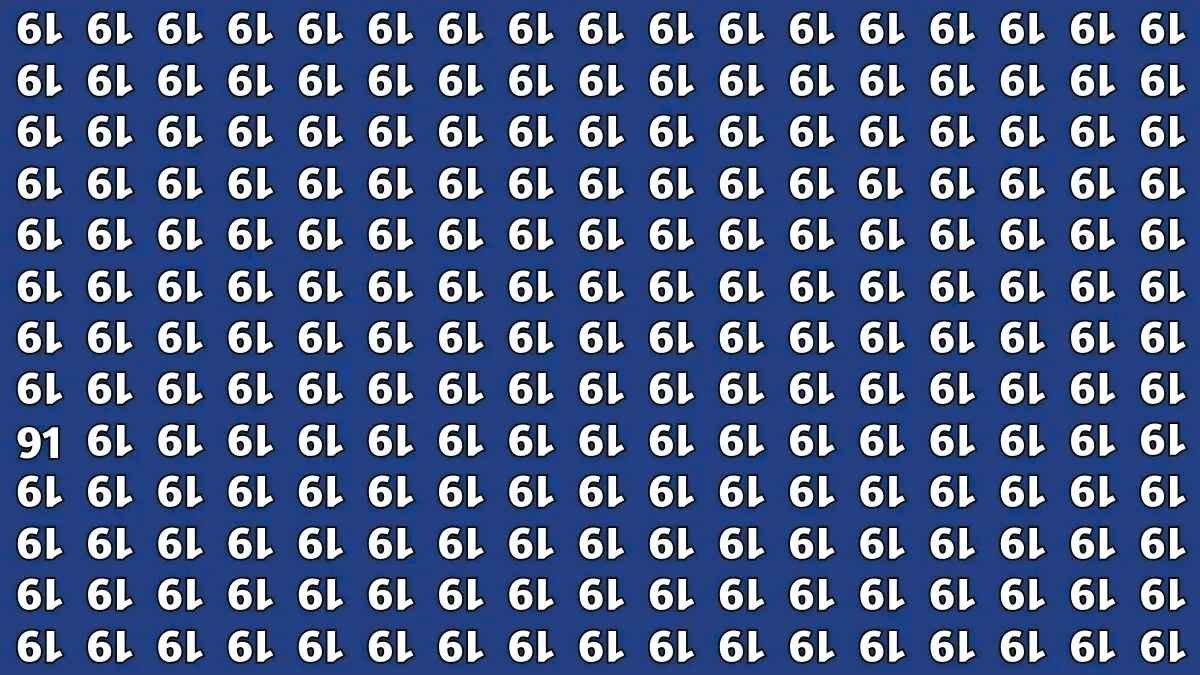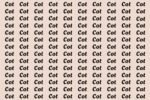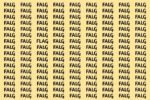Have you ever wondered how sharp your eyes really are? In an age where we’re constantly surrounded by screens, notifications, and visual overload, our eyes rarely get the chance to slow down and focus. But every now and then, a visual challenge comes along that not only tests your vision but also engages your mind. One such challenge making waves on the internet is the “Inverted 91” puzzle. It’s simple, fun, and oddly addictive can you find the hidden inverted 91?
The Puzzle That’s Bending Brains
At first glance, the image looks like a jumble of numbers or shapes nothing particularly special. But hidden within that mess is an inverted 91, cleverly camouflaged to blend in with its surroundings. What makes this puzzle so intriguing is how it plays with contrast, direction, and perception. It’s a classic optical illusion with a modern twist. You might think you’re staring at randomness, but if you look closely, the numbers are there just not in the way your brain expects them to be.
Why This Puzzle Works
There’s a psychological reason why puzzles like these are so engaging. They force your brain to switch out of autopilot mode and actually process visual input more attentively. In everyday life, we rely heavily on pattern recognition and expectation. Our brains like to fill in gaps and make predictions. That’s why you can often read jumbled words or recognize a face in a crowd with minimal effort. But when something is inverted literally turned upside down it disrupts your normal processing, and suddenly, you have to think.
In the case of the inverted 91 puzzle, the trick lies in presentation. The digits 9 and 1 aren’t placed in the orientation you’re used to seeing. That small tweak is enough to make them nearly invisible unless you slow down and search carefully.
Can You Spot It?
So how do you actually find the inverted 91? The best approach is to take a moment and stop trying to “read” the image. Instead, try to see it as a whole. Look for shapes and forms rather than specific numbers. If you’re too focused on trying to find a 9 and a 1 in the conventional way, your brain will filter out everything that doesn’t match.
Try rotating your head or even flipping your screen (if you’re using a mobile device). Sometimes a change in perspective is all it takes to reveal what’s been hidden in plain sight. It’s not about intelligence it’s about perception. And often, those with creative minds spot the pattern faster than those relying purely on logic.
Why Vision Challenges Are Going Viral
There’s a reason why puzzles like this are shared so widely on social media. They tap into our natural competitive spirit and curiosity. When someone says “Only 1% of people can find the inverted 91,” it immediately sparks a challenge. You want to prove you’re in that top 1%, even if you have to squint at your screen for five minutes.
But it’s not just about bragging rights. These puzzles offer a brief, satisfying mental break. In a world filled with scrolling, swiping, and short attention spans, taking a moment to focus deeply on something is almost therapeutic. It’s a rare pause that makes you forget everything else for a few moments.
The Science Behind Visual Puzzles
Optical illusions and visual puzzles are more than just entertainment. Neuroscientists use similar tests to study how the brain processes visual information. When an image doesn’t match our expectations, it triggers deeper cognitive engagement. That’s why you might suddenly “see” the inverted 91 after staring at the image for a while your brain adjusts its strategy and starts to interpret the input differently.
This is closely related to what’s called “perceptual learning” the idea that with practice, you can train your brain to notice more detail and spot patterns more quickly. So the more puzzles like this you try, the sharper your perception becomes over time.
What It Says About You If You Spot It
If you’re able to find the inverted 91 quickly, it might suggest that you have strong pattern recognition skills and a flexible way of thinking. People who are good at visual puzzles often approach problems from multiple angles and are comfortable thinking outside the box.
That said, not spotting it right away doesn’t mean anything negative. Everyone processes visual information differently. In fact, someone who struggles with this particular puzzle might excel at a different type of logic or word challenge. It’s all about how your brain is wired, not a measure of intelligence or ability.
A Fun Way to Test Focus
The inverted 91 puzzle is also a subtle test of focus and patience. Many people glance at it for a few seconds and give up, thinking there’s nothing there. But those who slow down, scan carefully, and resist the urge to rush usually end up finding it. That’s a skill that carries over into everyday life the ability to pay attention even when the solution isn’t immediately obvious.
We live in a world that rewards speed, but puzzles like this remind us of the value of careful observation. Sometimes, the answer is right in front of you just flipped around or hiding behind distraction.
The Satisfaction of Solving It
There’s a certain joy that comes with finally spotting the inverted 91. It’s like finding a secret that was hiding in plain sight. Your brain gets a little jolt of dopamine, the same chemical responsible for the pleasure we feel when we achieve something. That’s part of what makes these visual challenges so addictive that little rush of success.
Once you find it, it’s impossible to unsee. That’s the beauty of perception: once your brain locks onto the pattern, it becomes obvious, even effortless. It’s a small victory, but one that leaves you feeling just a bit sharper.
Want More Like This?
If this kind of visual brain teaser got your attention, you’re in luck. There are countless puzzles out there designed to test your eyesight, memory, logic, and creativity. From color illusions to hidden object games, the internet is full of ways to sharpen your mind and challenge your perception.
So next time you come across a puzzle like this one, don’t scroll past it. Take a second, pause, and give your brain a mini workout. Whether you find the solution in 10 seconds or 10 minutes, you’ll come away a little more aware of how powerful and surprising your mind can be.




